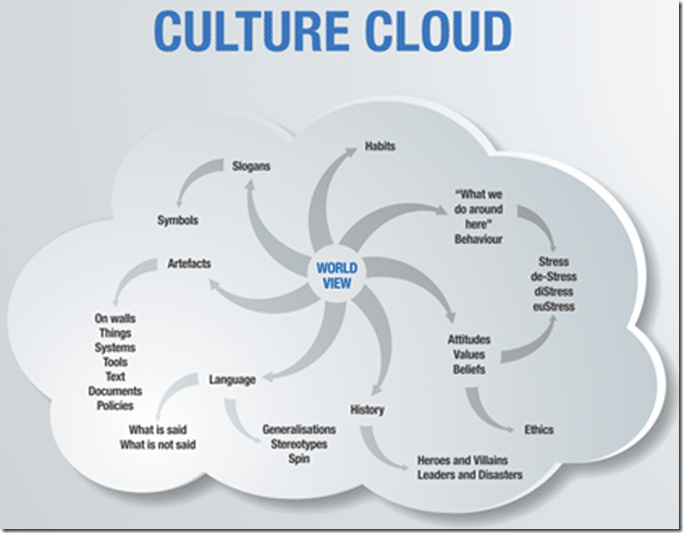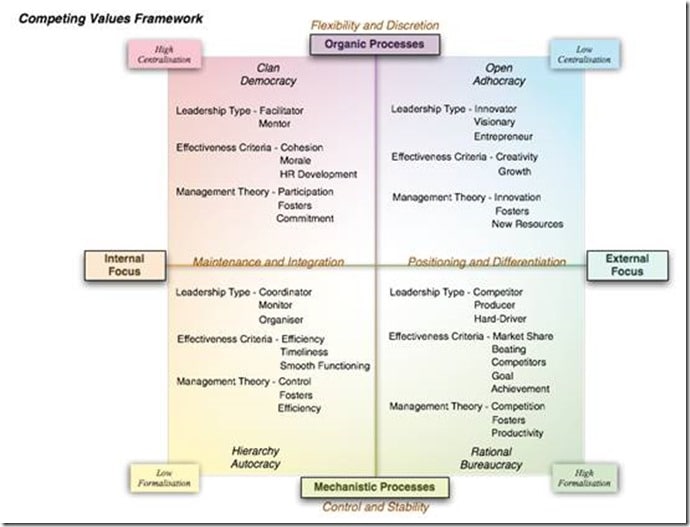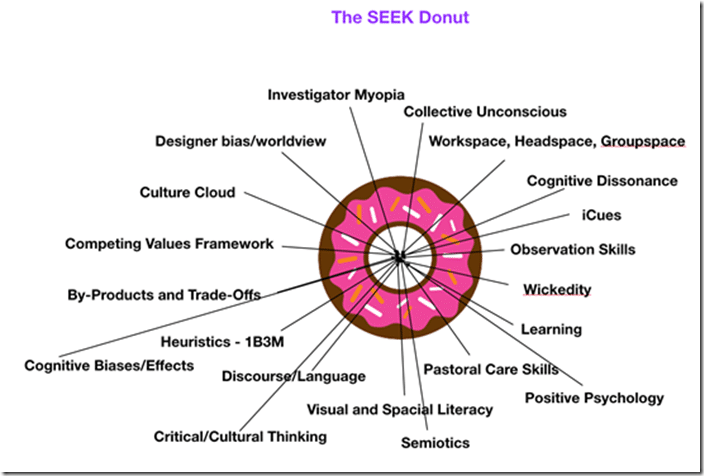The SEEK Investigations Donut
As a part of the SEEK Investigations Workshop (http://cllr.com.au/product/seek-the-social-psyvhology-of-event-investigations-unit-2/ ) we explore what is missing from contemporary and popular investigations methods. We use the idea of a donut to imagine what is missing from the centre, and use the donut metaphor to explain the gap in thinking between common investigations models (See Figure 3. The SEEK Donut) and a model that includes an understanding of the Social Psychology of Risk.
The following is an outline of what is typically missing from popular investigations programs. None of the factors discussed in this blog are a part of any Work Health and Safety Curriculum (https://safetyrisk.net/isnt-it-time-we-reformed-the-whs-curriculum/ ).
- The first and most important thing is to realize is the subjectivity of the investigation method designer. Most investigations methods assume a linear and reductionist worldview, that is, they see the world through a model of mechanics, technics and sequential order. This means that the method of investigation doesn’t really look for disorder, emergence, randomness and evolution in incident development but imposes a mechanistic focus and a ‘first cause’ approach on events. Typically investigations models come out of this paradigm which may make engineers and project managers feel comfortable but ends up making events fit a mechanistic worldview rather than a humanist worldview.
-
The misunderstanding of culture as just behaviours (what we do around here), leadership or systems is a significant problem for investigators. With such definitions one tends to see only those aspects of culture as influential to actions. In reality, all the elements of the culture cloud (See Figure 1. The Culture Cloud) are essential influences of actions.
Figure 1. The Culture Cloud
- Understanding how values compete is essential in understanding the shaping of decisions in event investigation. The Competing Values Framework (CVF) developed by Cameron and Quinn (https://www.researchgate.net/file.PostFileLoader.html?id…assetKey) is helpful in this regard. The nature of the CVF is also a critical part of the MiProfile Culture Survey tool and helps organisations better understand how values compete and influence decision making. This is illustrated in Figure 2. The Competing Values Framework.
Figure 2. The Competing Values Framework.
- An understanding of how trade-offs and by-products work is essential for any investigation. There is no decision that doesn’t include unseen and invisible by-products and trade offs. The idea that people make logical and ‘common sense’ decisions is a nonsense. Incidents are most often caused because what is logical didn’t happen nor is sensemaking held in common. A linear model of causality usually attributes cause that is not actually there and there is rarely any evidence of a causal link. It is most imposed by the method itself.
The nature of heuristics in decision making is critical in understanding decisions about risk (https://safetyrisk.net/investigations-and-heuristics/ ). We learn about the importance of heuristics in HB327:2010 Communicating and Consulting About Risk, the Handbook to the Risk Management – Principles and Guidelines AS/NZS ISO 31000: 2009. Most of our decisions are based on the need for efficiency, fast and frugal decision making. We develop this kind of thinking through experience and so most often use heuristic decision making in auto-pilot, through routine, habit, experience and ritual. Often it is a failed heuristic in times of work turbulence that results in an event not some intentional choice to be unsafe. Safety is often not a ‘choice’ you make! We learn about this through the fact that humans have One Brain and Three Minds (1B3M) (https://vimeo.com/106770292, https://vimeo.com/156926212 ). A study of cognitive biases and effects is also important (https://en.wikipedia.org/wiki/List_of_cognitive_biases ). A beginning is to understand the nature of the individual and collective unconscious.
One Brain Three Minds from Human Dymensions on Vimeo.
- It is important to be a critical observer and listener in investigations. This requires an alertness to the influence on language and how discourse creates meaning (semiosis) in organisations and procedures. This involves learning how to be semiotically literate as well as visually and spacially literate. In the workshop we provide tools to assist participants become more spacially and visually literate. In addition it is also helpful to have some training in critical and cultural theory, particularly how power shapes decision making. People are not naturally observant, observation is learned in a similar way to what makes and indigenous tracker more effective in the outback than rationalist detective skills. Skills of differentiation are important but so too is discernment, wisdom and knowing iCues ™.
Understanding personality and having skills in Pastoral Care are essential when one rolls up for an investigation. This involves emotional intelligence, training in a personality indicator but also knowing the foundational skills of ‘attending’, reflective listening, open questioning, ‘Unconditional Positive Regard’ and suspending agenda. The basic skills of Helping (see gerard Egan or Edgar Schein) are essential. Whilst it is good to bring in aspects of positive psychology and appreciative enquiry into the investigation, specific skills associated with general Rogerian psychology are needed.
The study of semiotics is about how signs systems and symbols have significance. Such simple things as mantras and slogans like zero can create an underlying ideology so that at times of crisis, people make decisions under the unconscious influence of that semiotic. For example, if one counts injury rates and publishes them under the rubric of zero harm, then don’t be surprised if under reporting is a contributing factor to the decision making in an event. The ideology of zero is a dynamic that directly opposes learning.
Wicked Problems are problems that are beyond complexity, they are intractable, unsolveable and messy. Understanding the nature of wickedity is essential for an investigator as often is the case, risk is proposed as a simple problem and this creates investigation myopia. One tends to only look for what one can see (information) rather than for what one can’t see (exformation). In this regard it is helpful to understand how the pressure of Cognitive Dissonance affects decision making. When faced with massive pressures to conform and comply, most people will not take an alternative approach.
It is essential that the investigator understand the various layers of risk, particularly how risk manifests in Workspace, Headspace and Groupspace ™.
What happens in most investigations is an emphasis on the physical space over the dynamics of social psychological factors. In the SEEK Investigations Workshops several tools are learned to help bring these factors into perspective in an investigation.
When one understands the massive gaps in the SEEK Donut and learns skills in the social psychology of investigation, then one can become a better investigator, a more positive investigator and a more holistic (pun intended) investigator.
Figure 3. The SEEK Investigations Donut





Do you have any thoughts? Please share them below